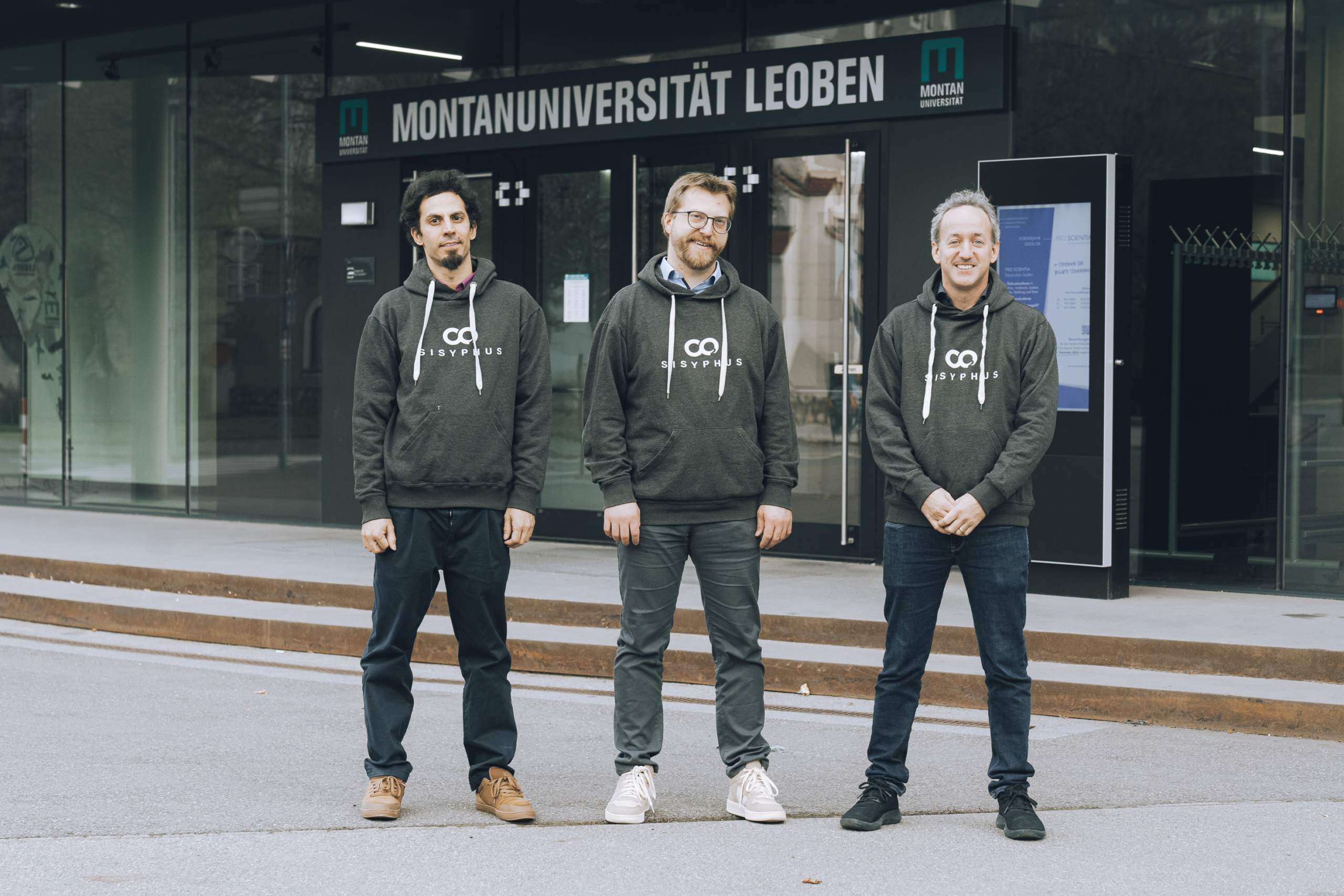Sisyphus Team (© Sisyphus)
Decarbonization remains one of the greatest challenges of our time. Sisyphus is making an important contribution to decarbonization with the development of a catalyst technology that transforms CO₂ into valuable products, enabling a more efficient process for producing green fuels and chemicals. This innovation targets a rapidly expanding market transitioning from fossil-based to renewable fuels, e.g. for aviation, and contributes significantly to global efforts toward net-zero emissions.
Rudolf Sallinger Fonds: Last year, you won a spot at the IECT Summer School. What did you experience there, and how did this opportunity help you move forward?
Lorenz Lindenthal: The I.E.C.T. Summer School was a great format. Since it was also the last round, I was even more lucky to be one of the participants. The input we got was very high quality, and the network and connections we made were amazing.
With regards to the progress in our project, we are currently mostly focusing on technology in the scope of our FFG Spinoff Fellowship. While business development was not our main focus at that point I was able to build many important connections and the lessons learned through the program have been particularly valuable as we look more towards company building and making the leap to commercialisation.
What were the three biggest three milestones in the past year?
Tom Cotter: The last year has been marked by a huge technical push. We have successfully been funded by the FFG in the Spin-Off Fellowship, which allowed us to focus specifically on the development of our MVP (minimum viable product).
One of the big milestones was growing our team. We are now four people, which has a huge impact on our ability to move forward with the technical development. We have made many inroads with our technical catalyst and process development which has put us in the position to develop our MVP basis. This will be the blueprint for the demonstration unit we are building in our next phase beginning in Autumn.
We have also progressed in discussion with partners and potential customers. To achieve this we had an excellent cooperation together with the WU in a program where we worked together with a team of business students. Here we could really leverage their commercial experience and test the business model through customer interviews. This has helped us to put together an investment pitch deck that we will need going forward.
What was the biggest challenge regarding these developments?
Lorenz: One of the biggest challenges is always the equipment. Maintenance and repair of broken equipment takes a lot of time. We also encountered some challenges in the upscaling that we did not foresee. We now have a strategy on how to overcome these issues and we are in a much better position to scale to the demonstration level.
Tom: We are currently working on the transition from being a University spinoff to becoming an investable start-up. However, our funded project focuses principally on the technical milestones and we must therefore really focus on the product, but at the same time keep an eye on the needs of the customers and market. Keeping that in mind and balancing this is one of the biggest challenges. Nevertheless, focusing on the technology is the one thing that can bring us the customers, so it has been an important step to bring our idea closer to reality. The market for renewables is growing fast, but the technology adoption rate is slow, so we are still in time with our market entry strategy.
(How) will global political developments impact your work?
Tom: Political developments do have an impact on our work. In Europe, we are still somewhat isolated from the climate-denying positions. In the US, it will be a very different picture.
We are in contact with competitors and partners and we see that they are facing a lot of headwinds in the market, because the adoption of these climate-friendly technologies will take longer. There is still a market pull for renewable products, but the incentives for producers are getting stripped away in some cases, so we must see how that develops in Europe. We are pushing to try and demonstrate our technology and show a way towards more economic processes and hope that policy makers continue to see the value in pioneer clean technologies.
Due to the political situation, we are currently focusing on deployment in Europe, but it’s a global business. We are therefore very open to develop partnerships outside of Europe.
Which skills do you want to grow within your team?
Tom: We are now four people working on the project full time and hope to grow our team in the near future. Beyond our current funded project we are looking to grow our team with additional business development as well as strengthening our engineering and materials talent.
What (entrepreneurial) goals have you set for 2025?
Tom: The main goal is to setup our runway later in the year, which will involve founding a GmbH and company building in order to have sufficient liquidity to grow and achieve our goals in 2026/27. We are looking for a combination of investment and public funding to take us to the next level, which is to demonstrate our technology on-site at a customer.
We are looking forward to some exciting next steps and going into summer with concrete technical achievements under our belt to build our product together with customers!










